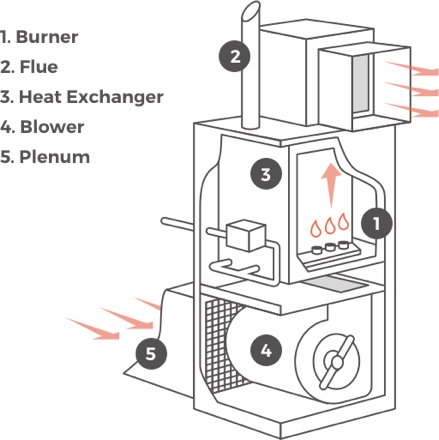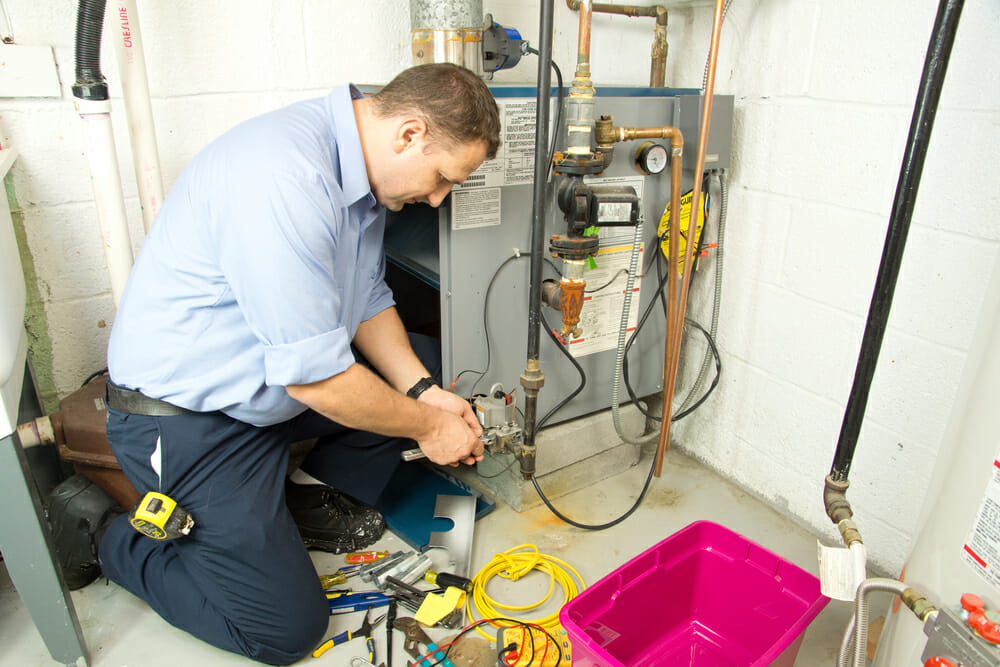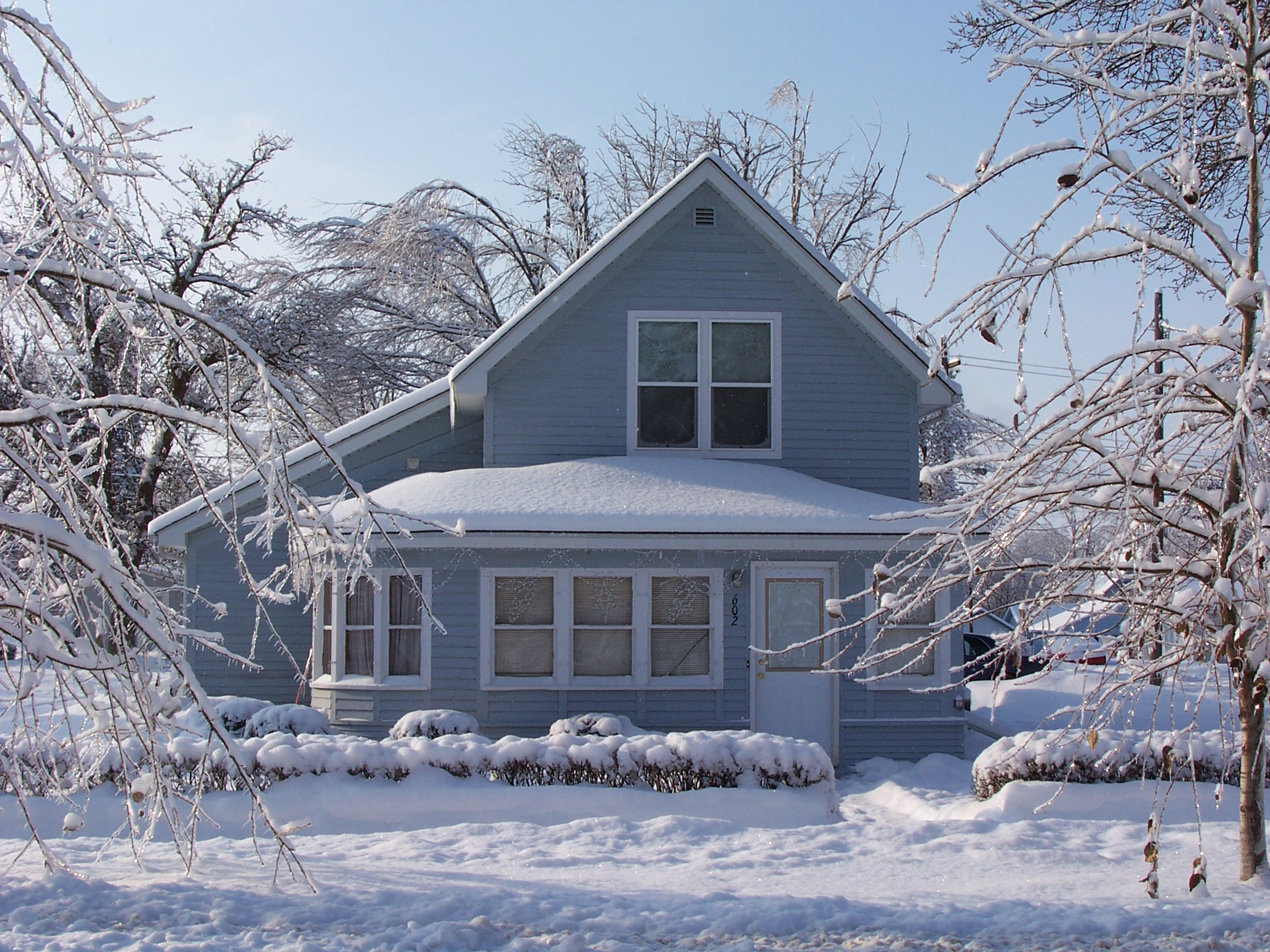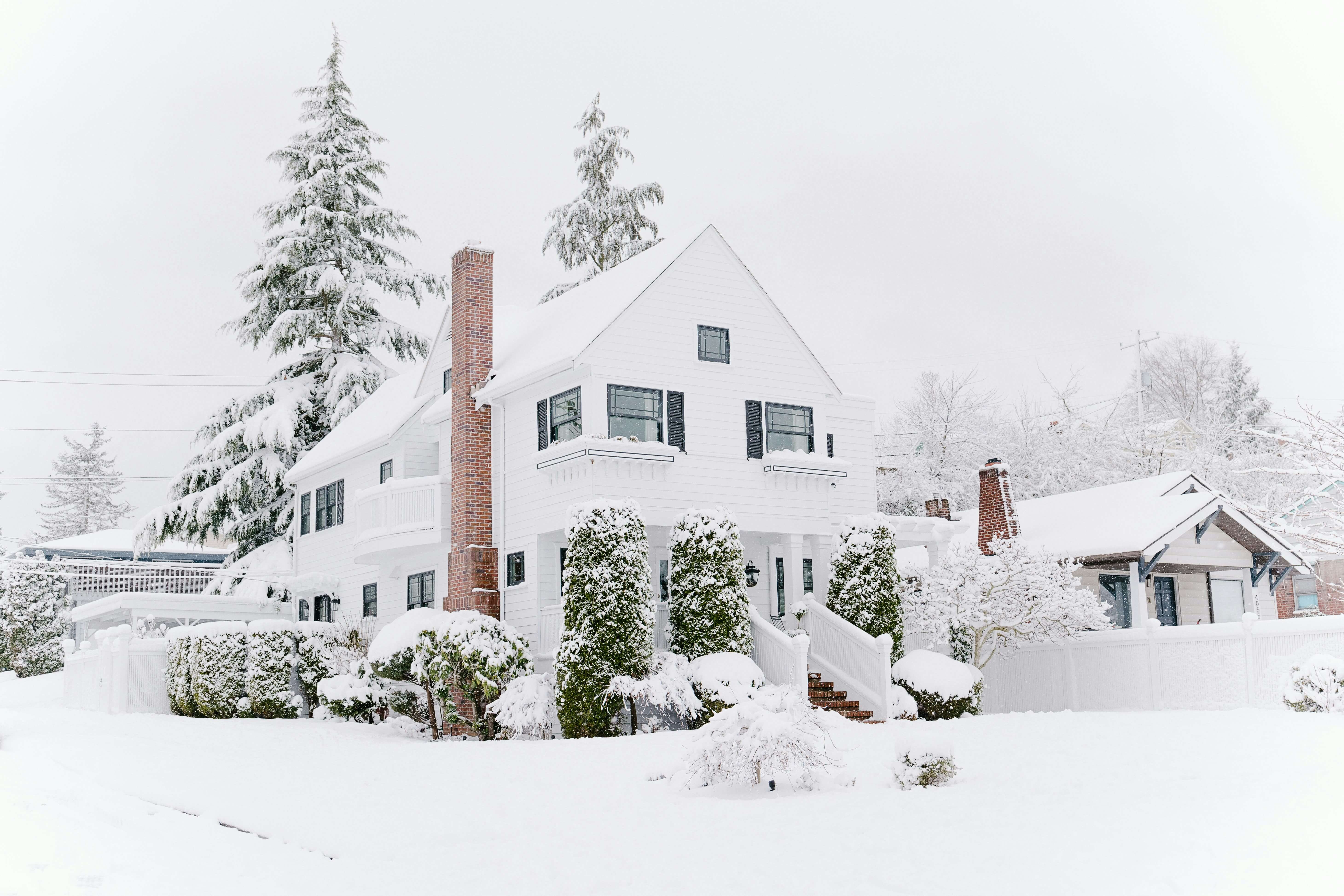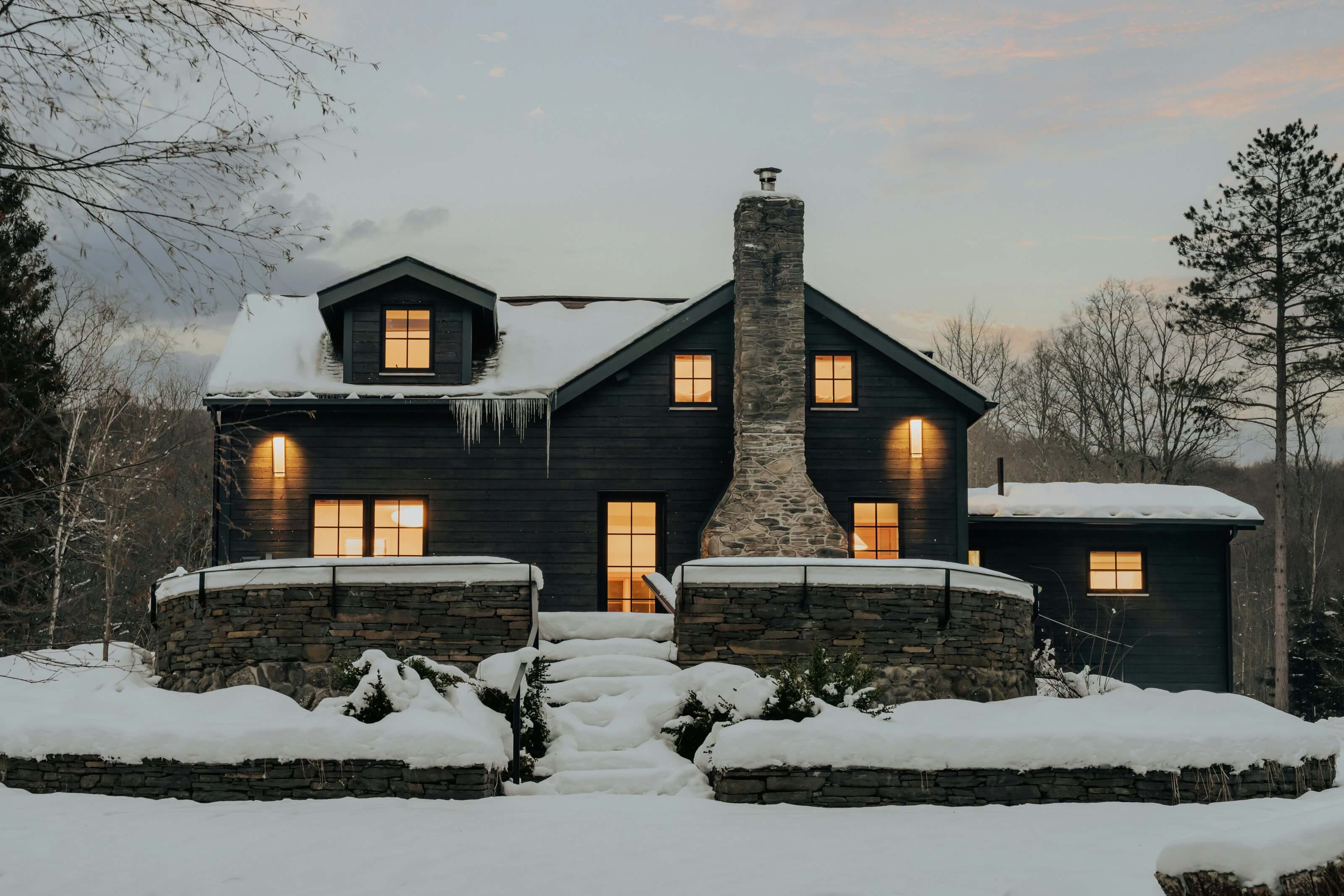How Much Does a New Electric Furnace Cost?
Electric furnaces are an affordable and efficient heating option for many households. Your total price depends on the brand, size of the furnace, and the complexity of installation.
On average, homeowners can expect the following costs in 2026:
| Cost Component | Cost Range |
|---|---|
| Electric Furnace Price | $338 to $621 |
| Installation Cost | $767 to $3,523 (includes labor and materials) |
| Cost to Replace Furnace | Up to $3,523 or more (with removal fees and ductwork) |
Keep in mind that replacing a furnace often means removing the old unit and making ductwork repairs, both of which can raise costs.
Cost Per Square Foot
The cost of an electric furnace also depends on the size of your home. Homeowners should budget both for the unit itself and professional furnace installation. Below are estimates based on common home sizes:
| Home Size | Furnace Unit Only | Unit + Professional Installation |
|---|---|---|
| 1,200 square feet | $400 to $600 | $1,600 to $3,000 |
| 1,500 square feet | $500 to $700 | $2,000 to $3,200 |
| 2,000 square feet | $600 to $850 | $2,400 to $3,800 |
| 2,500 square feet | $700 to $1,000 | $3,000 to $4,500 |
These totals give you a clearer idea of what you’d pay for the whole home, not just per square foot.
Labor Costs
An HVAC contractor typically charges $129 to $237 per hour for electric furnace work. Labor costs vary depending on what the job requires:
| Task | Average Cost |
|---|---|
| Hourly labor | $129 to $237 per hour |
| Removing old furnace | $183 to $336 |
| Ductwork installation or repair | $5.95 to $10.93 per linear foot |
Because electric furnaces are easier to install than gas or oil systems, labor costs can be lower overall. However, if you’re replacing an older furnace or repairing ductwork, expect costs to increase. Always ask your contractor for a detailed breakdown of labor hours and materials.
Is It a Good Idea to Buy an Electric Furnace?
Electric furnaces offer several key benefits:
- Faster installation than gas or oil furnaces, with less disruption to your household.
- Lower upfront costs compared to many other heating systems.
- Lifespans of 20 to 30 years with proper maintenance.
- Safe and quiet operation with no risk of carbon monoxide leaks.
- Eco-friendly when paired with renewable electricity sources like solar.
How the process works:
- Initial Assessment: A contractor evaluates your home’s heating needs.
- Old System Removal: Your existing furnace and ductwork are removed if needed.
- Installation: The new electric furnace is wired and connected.
- Testing and Inspection: Safety and efficiency checks are completed.
- Final Adjustments: The system is fine-tuned for optimal performance.
How Much Does It Cost to Run an Electric Furnace?
Operating costs depend on local energy rates. On average, electricity costs more than natural gas. Average annual operating costs:
- Electric Furnace: $2,628
- Gas Furnace: $1,800
This makes electric furnaces roughly 63% more expensive to run than gas systems. Your climate plays a major role — colder regions require more energy for heating, while milder regions may see much lower operating costs.
Electric vs. Gas Furnace vs. Heat Pump Costs
Choosing between heating systems often comes down to cost, efficiency, and lifespan. Here’s a side-by-side look at how electric furnaces compare with gas furnaces and heat pumps.
| System | Upfront Cost (Unit + Install) | Average Lifespan | Annual Operating Cost | Best For |
|---|---|---|---|---|
| Electric Furnace | $1,600 to $4,500 | 20 to 30 years | $2,600 | Homes without gas access, low upfront budget, mild to moderate climates |
| Gas Furnace | $3,000 to $7,000 | 15 to 20 years | $1,800 | Cold climates, lower energy bills, homes with natural gas line |
| Heat Pump (Air-Source) | $4,000 to $8,000 | 15 to 20 years | $1,000 to $1,500 | Moderate climates, homeowners wanting heating + cooling in one system |
Cost for Electric vs. Gas Furnaces
Many homeowners choose electric furnaces when they don’t have access to a natural gas line. Electric furnaces are also:
- Easier to install since they don’t require venting.
- Quieter to operate than gas furnaces.
- Longer lasting, with lifespans of 20 to 30 years (compared to 15 to 20 years for gas).
That said, gas furnaces usually cost less to operate. Your local climate is an important factor — homes in very cold regions often save more with gas, while milder climates make electric a practical choice.
Regional Cost Variations
Where you live can significantly affect installation and operating costs.
| Region | Average Installed Cost | Notes |
|---|---|---|
| Northeast | $2,500 to $4,000 | Higher labor rates and colder climate increase demand. |
| Midwest | $2,200 to $3,800 | Wide temperature swings raise operating costs. |
| South | $1,800 to $3,200 | Lower heating demand keeps costs down. |
| West | $2,000 to $3,600 | Costs vary widely depending on climate zone. |
Other Factors That Affect Your Installation Costs
- Ductwork Requirements: Reusing existing ducts is cheaper; replacing them adds significant cost.
- Insulation Quality: Poor insulation or drafty windows may require upgrades to maximize furnace efficiency.
- Additional Costs: Old system removal, disposal fees, permits, and inspections can all add up.
Always ask for a detailed written quote so you understand every line item.
What Size Electric Furnace Do You Need?
Choosing the right furnace size is key for both comfort and efficiency. Contractors use your home’s square footage and local climate zone to recommend the correct tonnage and BTU output.
For example:
- A home in Zone 5 (northern U.S.), about 1,400 to 1,600 square feet, typically requires a 2.5-ton unit.
- A home in Zone 1 (southern U.S.), about 1,500 to 1,800 square feet, may need a 3-ton unit.
What Size Electric Furnace for a 2,000 Square Foot House?
Most 2,000 square foot homes will need a furnace in the 3 to 3.5 ton range, depending on insulation and climate.
What Size Electric Furnace for a 1,500 Square Foot House?
For a 1,500 square foot home, a 2 to 2.5 ton unit is usually sufficient. Warmer climates may be fine with 2 tons, while colder regions benefit from the higher end of that range.
Tips for Lowering Costs
Energy Efficiency
Even though electric furnaces can be more expensive to operate, you can reduce costs with smart home upgrades:
- Install a Smart Thermostat: Automatically adjusts heating schedules for comfort and savings.
- Seal Air Leaks: Caulking windows and doors prevents heat loss.
- Improve Insulation: Proper attic and wall insulation reduces the strain on your furnace.
- Schedule Annual Maintenance: Keeps your system running at peak efficiency.
- Pair With Solar: If you have solar panels, running an electric furnace becomes far more cost-effective.
Financing and Rebates for Electric Furnaces
Upfront costs can be easier to manage with financing and rebates. Ask your contractor about:
- Utility Rebates: Many power companies offer rebates for high-efficiency systems.
- Tax Incentives: Tax credits may apply if you pair your furnace with renewable energy upgrades.
- Manufacturer Promotions: Furnace brands often run seasonal discounts.
- Financing Options: Many contractors offer monthly payment plans instead of lump-sum payments.
Best Electric Furnace Brands
Brand quality is fairly consistent with electric furnaces, but costs vary. Here’s what you can expect to pay for an electric furnace from these popular brands.
| Electric Furnace Brands | Electric Furnace Prices | Installation Costs |
|---|---|---|
| Amana Furnaces | $475 | $1,780 |
| American Standard Furnaces | $1,143 | $2,400 |
| Bryant Furnaces | $536 | $1,785 |
| Carrier Furnaces | $780 | $2,120 |
| Coleman Furnaces | $482 | $1,825 |
| Goodman Furnaces | $385 | $1,632 |
| HEIL Furnaces | $435 | $1,500 |
| Lennox Furnaces | $1,125 | $2,418 |
| Payne Furnaces | $415 | $1,630 |
| Rheem Furnaces | $515 | $1,915 |
| Ruud Furnaces | $565 | $1,975 |
| Trane Furnaces | $1,150 | $2,230 |
| York Furnaces | $630 | $2,059 |
Electric Furnace Maintenance
Taking care of your furnace helps it run efficiently and last longer:
- Replace Filters Regularly: Dirty filters reduce airflow and efficiency.
- Clean Blower Components: Remove dust and debris from the blower and motor.
- Inspect Belts and Pulleys: Look for signs of wear.
- Schedule Annual Maintenance: Professional tune-ups extend the system’s lifespan.
Lifespan of Electric Furnaces
Electric furnaces are known for lasting longer than gas or oil systems, especially when properly maintained.
| System | Lifespan | Typical Maintenance Needs |
|---|---|---|
| Electric Furnace | 20 to 30 years | Filter changes, blower cleaning, annual inspection |
| Gas Furnace | 15 to 20 years | Filter changes, vent and burner cleaning, annual safety check |
| Heat Pump | 15 to 20 years | Filter changes, coil cleaning, refrigerant checks |
How to Find a Trustworthy Electric Furnace Installer
- Get Multiple Bids: Compare quotes to ensure competitive pricing.
- Ask About Equipment Markups: Some installers charge less for labor but more for the furnace itself.
- Consider a Thermostat Upgrade: Modern systems often need newer controls.
- Request a Detailed Proposal: Review model numbers, cost breakdowns, and timelines.
- Verify Sizing Calculations: Make sure the contractor sized your furnace correctly.
- Insist on Name Brands: Avoid brands that may fail early.
Doing your homework helps ensure a smooth installation and a system that will keep your home comfortable for years to come.
We Can Help You Find the Right Contractor
Installing or replacing an electric furnace is a big investment. Understanding your costs — from the unit price to installation and operating expenses — helps you budget with confidence. Modernize connects homeowners with pre-vetted local contractors, so you can compare quotes, ask the right questions, and choose the professional who’s best for your home.
Compare top-rated HVAC pros in your area.
Read real homeowner reviews, explore qualifications, and view promotions. Modernize makes it easy to browse professionals and find one that will be perfect for your project.





